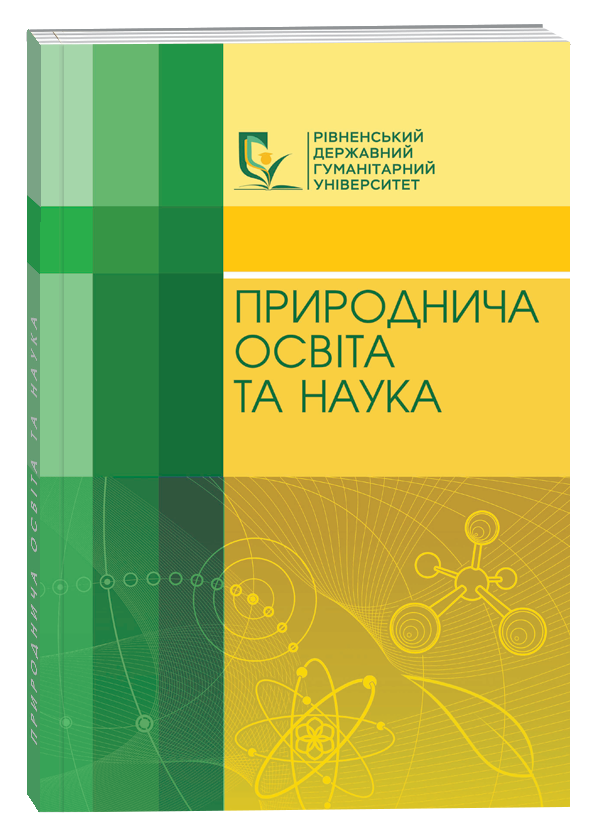MONITORING OF CONIFERS OF SHAKHTARSKY PARK IN KRYVYI RIH CITY
Abstract
The article presents the results of a monitoring survey of coniferous plants in the Shakhtarsky рark in Kryvyi Rih. We analyzed the species diversity of these introduced species, compared the biometric indicators of coniferous trees, and assessed their vital statе after 14 years after the initial examination. In total, we examined 378 coniferous plants, among which the most common species and forms are Picea abies L.Karst. (30.16%), Picea pungens ‘Glauca’ Beissn. (26.98%), Pinus pallasiana Lamb. (16.93%), Thuja occidentalis L. (16.93%), Picea pungens Engelm. (6.61%), Pinus sylvestris L. (2.39%) of the total number of these trees. The park contains various types of coniferous plantings: alley, row, group, and curtain. Most evergreen plants in the park are of average age 31–40 years, and the smallest number of older trees are 51–60 years old.It was found that the most numerous group of plants was found to be 8.1 to 16.0 m tall and 10.1 to 40.0 cm in trunk diameter, which is 61.64% and 75.66% of the total number of conifers, respectively. The smallest number of trees belongs to the group whose height and diameter ranged from 1.0–4.0 m and 50.1–60.0 cm, which is 4.76% and 2.38% of the total number of conifers, respectively. Among the tallest trees with a height of 16.1 m and a trunk diameter of more than 50.1 cm, the species Picea pungens ‘Glauca’, Picea abies and Pinus pallasiana prevailed. It was noted that the increase in the height of trees and the diameter of their trunk after 14 years for Picea abies was 4.86 m and 5.98 cm; Picea pungens ‘Glauca’ 2.62 m and 4.46 cm; Pinus pallasiana 2.11 m and 4.17 cm respectively.According to the scale of vital statе, the vast majority of coniferous plants in the Shakhtarsky рark belong to the category “healthy trees” – 84.13%, the number of weakened trees is 7.14%, severely weakened – 4.50%, dying – 4.23%. The most sensitive to damage by pests and diseases were Pinus pallasiana trees and Pinus sylvestris. The highest vital statе indicators are Thuja occidentalis, Picea abies, Picea pungens and its cultivar ‘Glauca’. Based on the results of the research, recommendations were made to improve the condition of coniferous plantations in the park.
References
2. Бессонова В. П., Іванченко О. Є., Скляренко А. В. Видове багатство деревних насаджень та їх життєвий стан в Обухівському парку Дніпропетровської області. Scientific Bulletin of UNFU. 2024. Т. 34. № 2. С. 17–25. DOI: 10.36930/40340202.
3. Бойко Л. І., Юхименко Ю. С., Данильчук О. В. Інтродукція деревних рослин у промисловому регіоні степової зони України та їх використання в озелененні міст. Київ : Талком, 2024. 268 с.
4. Бойко Т. О. Фітосанітарний стан зелених насаджень міста Херсон. Науковий вісник НЛТУ України. 2020. Т. 30. № 4. С. 67–72. DOI: 10.36930/40300412.
5. Ковалевський С. Б., Кривохатько Г. А. Посухостійкість та водоутримувальна здатність рослин Thuja оccidentalis L. та її культиварів. Науковий вісник НЛТУ України. 2018. Т. 28. № 2. С. 77–80.
6. Кохно М. А., Гордієнко В. І., Захаренко Г. С. Дендрофлора України. Дикорослі та культивовані дерева й кущі. Голонасінні: довідник. Київ : Вища школа, 2001. 205 с.
7. Санітарні правила в лісах України: Затв. Постановою Кабінету Міністрів України від 26 жовтня 2016 р. № 756. URL: http://zakon2.rada.gov.ua/laws/show/756-2016-%D0%BF (дата звернення: 24.02.2025).
8. Солоненко А. М., Яровий С. О., Брен О. Г. Методичні рекомендації до лабораторно-практичних занять з курсу «Лісова таксація». Мелітополь. 2009. 62 с.
9. Суслова О. П. Оцінка успішності інтродукції культиварів Thuja occidentalis L. та перспективи їх використання в північно-степовій зоні України. Екологічні науки. 2022. № 2 (41). С. 130–134. DOI: 10.32846/2306-9716/2022. eco.2-41.22.
10. Терещенко Л. І. Дослідження кращих соснових насаджень і відбір плюсових дерев у Запорізькій області. Лісівництво і агролісомеліорація. 2017. Вип. 131. С. 96–103.
11. Терлига Н. С. Данильчук Н. С., Юхименко Ю. С. Структура зелених насаджень парку ім. Богдана Хмельницького та перспективи їх розвитку (м. Кривий Ріг, Дніпропетровська обл.). Вісник Одеського національного університету. Серія: Біологія. 2018. Т. 23. № 2. С. 38–53.
12. Федоровський В. Д., Терлига Н. С., Юхименко Ю. С., Данильчук О. В., Данильчук Н. М., Лаптєва О. В. Видовий склад та життєвий стан деревно-чагарникової рослинності парків та скверів м. Кривий Ріг. Інтродукція рослин. 2013. № 3. С. 73–79.
13. Fedorchak E. Characteristics of the assimilation apparatus of species from the genus Picea А. Dietr. in the conditions of different pollution levels. Ekológia (Bratislava). 2024. Vol. 43 (2). Р. 150–157. DOI: 10.2478/eko-2024-0015.
14. Gritsan Y. I., Lovynska V. M., Sytnyk, S. A. Radial increment dynamics in Pinus sylvestris stands within the Northern Steppe of Ukraine. Biosystems Diversity. 2018. 26 (3). Р. 213–217. DOI: 10.15421/011832.
15. Sharma R. P., Vacek Z., Vacek S., Podrazsky V., Jansa V. Modelling individual tree height to crown base of Norway spruce (Picea abies (L.) Karst.) and European beech (Fagus sylvatica L.). PLoS One. 2017. 12 (10), р. 1–23. DOI: 10.1371/journal.pone.0186394.
16. Špulák O. Aboveground biomass and nutrients in an 18-years-old stand of blue spruce (Picea pungens Engelm.) as a substitute tree species. Journal of Forest Science. 2012. № 58. Р. 253–264. DOI: 10.17221/82/2011-JFS.






